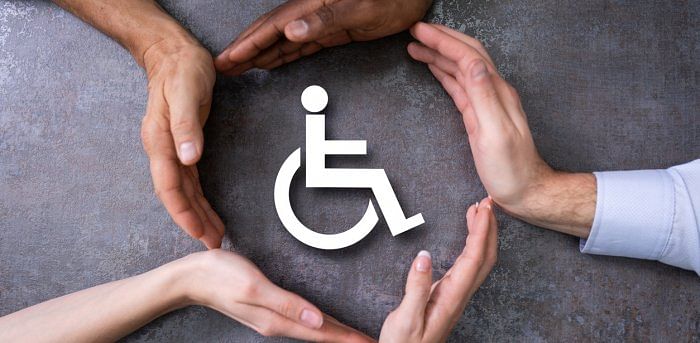
Disability inclusion is a matter of justice and an investment in our common future and shared prosperity. However, there has not been much change in our attitude or ground realities regarding facilitating the accessibility of persons with disabilities in India after 75 years of independence. It shocked many when former prime minister Manmohan Singh was moved from the front row of the Rajya Sabha to the last. Singh (90) now uses a wheelchair, and his “ease of mobility” was cited as the reason for this change in the allocation of his seat in the Upper House of Parliament.
This issue brings back the focus on the challenges of accessibility for the disabled. It is a daily struggle for millions of disabled people who have to commute daily via public transport, visit local grocery stores, ATMs, use pavements, etc., as no city in India is 100% disabled-friendly.
Governments as well as other stakeholders have taken many initiatives to address the issues surrounding disability. Still, as the former PM’s case suggests, there are yawning gaps when it comes to universal access in public places raising questions about the strategy and methodology of these interventions.
The government, under its Accessible India campaign, launched a programme to make Central and state government buildings accessible. After the campaign ended in June 2022, the government reported that out of 1,100 central government buildings, 1,030 were made fully accessible, while only 595 out of 1,423 selected buildings had been made fully accessible. Similarly, railway stations and airports have been upgraded to make them more accessible.
All this work, in compliance with the Rights of Persons with Disabilities Act 2016, is good, but it only addresses a part of the problem. We need a focussed push to expand infrastructure support, remodelling of our work culture, continued mass awareness and sensitisation programmes, sustained policy dialogues, and capacity building for people employed in the disability sector.
NCERT’s eighth All India School Education Survey (AISES) makes startling revelations on schooling facilities for children with disabilities. Out of a total of 58,76,273 teachers, only 1.32% (80,942) have received training in inclusive education.
According to a study conducted last in 2016, of all the schools in the country, only 10% have handrails, 4% have adapted labs, and 8% have adapted toilets. Out of 12,99,902 schools, Braille books are available in 89,145 (6.86%), Braille slate and stylus in 88,775 (6.83%), Taylor frame in 88,399 (6.80%), abacus in 1,08,441 (8.34%), hearing aid in 94,882 (7.30%), computer and software in 1,00,334 (7.72%), and audio-visual aids in 1,09,647 (8.44%) schools. This lack of accessibility acts as a major hurdle in the holistic growth of disabled children and has led to children and parents opting for open education.
In such a situation, India is unlikely to realise the goals of National Education Policy 2022. The nation’s poor track record in enabling employment for disabled people is another area of concern. The RPwD Act mandates a 4% reservation in government jobs for disabled people, however, realities are different. In the central government, against 2,036 in 2018, the appointments went down to 1,709 in 2019 and 1,375 in 2020. Add to that the rigid employment criteria for disabled people, and you have a lot of open positions.
Many people with disabilities can be included in the workforce with reasonable accommodations, including addressing the attitudinal barriers towards disability in society, deep-rooted stigma, and stereotypes.
An NCPEDP-Javed Abidi Fellow carried out an independent audit of various tourist spots in Rishikesh and Dehradun in Uttarakhand to check for accessibility, which discovered flaws in the accessibility of tourist places. Even where efforts were made to make the infrastructure compatible, the prescribed standards were not met. Malls and shops had ramps constructed, but they could be accessed only with assistance. River rafting, a major tourist attraction in Rishikesh, was inaccessible to disabled people.
Persons with disabilities are important to our socioeconomic, cultural, and political ecosystems. Unfortunately, they do not get what they need to live a dignified life. However, for them, the ease of living remains a distant dream.
The social model of disability focuses on the interaction between a person and his environment, thereby highlighting the role of society and various institutions—government and private—in combating the stigma attached to disability. The private sector, government procurements, and tenders do not account for the accessibility needs of PwDs, creating products and services that continue to remain inaccessible for the disabled population.
With India’s ongoing G20 presidency, unless we create a culture that supports, promotes, and includes disability in all aspects of life, the vision of building a truly accessible, inclusive, and self-reliant India seems remote.
(The writer is the Executive Director, the National Centre for Promotion of Employment for Disabled People.)